Aerotech: Doing Double Duty In South Australia
Aerotech, founded in 1968, operates a 30-strong fleet primarily of Air Tractor AT-802s for bushfire suppression and agricultural applications.
As bushfires rage across Australia, Kestrel Aviation, established in 1985 by Captain Ray Cronin, is helping to combat the blazes.
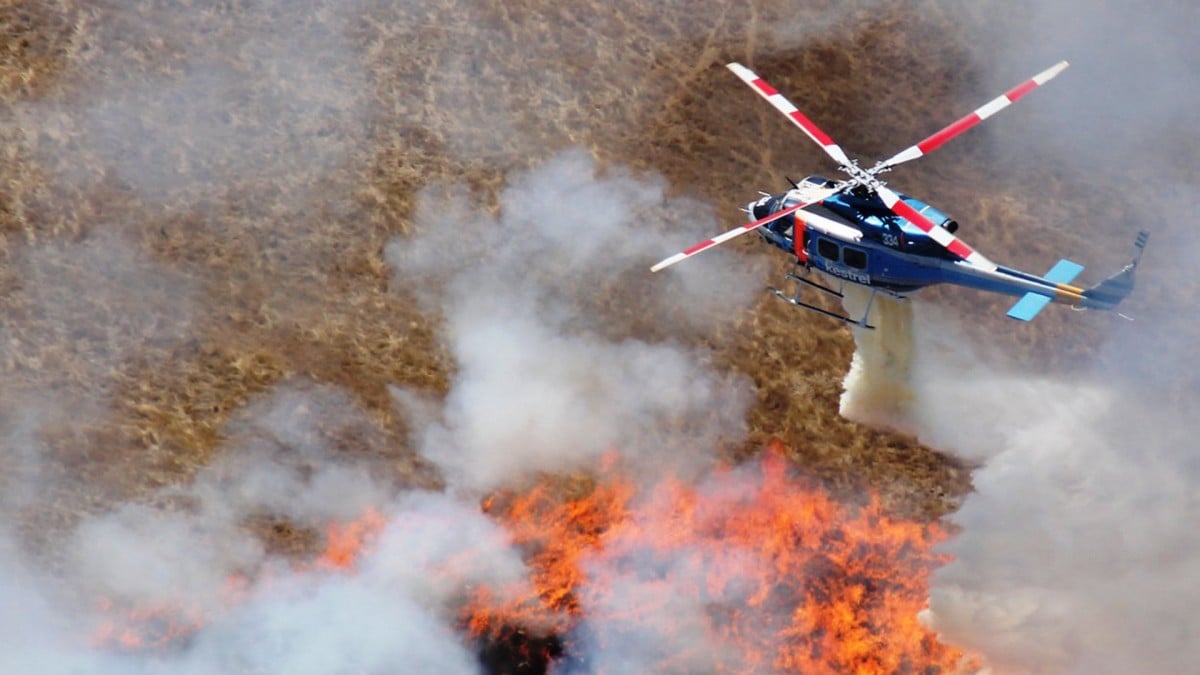
The day I called Kestrel Aviation, January 2nd, Managing Director Ray Cronin had just one word for the bushfire situation in Victoria – “Terrible! It’s on a scale that no one has ever, ever seen. It’s not just the scale of it, it’s the ferociousness of the fires. They’re moving so fast that hundreds of kilometers have burned. They’re not stoppable. They’re covering hundreds of miles of the southeastern coastline and inland up to about 100 miles. You have a large swath of burning with some pockets of clear. The wind is swinging around, changing directions so that anything that hasn’t been burned is at risk of being burned.”
Cronin pointed out that this is the peak of the holiday season, with droves of tourists descending on contractors to augment the aircraft on exclusive-use contracts. “Some states rely heavily on the coastal regions for long-planned vacations. “Victoria has declared a state of disaster. This is the peak holiday period here in Australia, so people with limited leave are reluctant to stop their holiday.”
“Despite all the warnings the state fire commissioners are making in each of the states, some people are still hanging around. There are massive evacuations. The Navy sent in two ships to take hundreds of people off the beaches.”
Exacerbating the situation further, bushfire season started much earlier than it usually does. “The season used to start in Queensland, then ran down the East Coast over several weeks, gets to Victoria and Tasmania about February, when Western Australia starts as well,” Cronin explained.
“But this time, all the states have had big fires as early as September and no one is able to share resources across borders. Each state is just engaging what they can and holding onto it.”
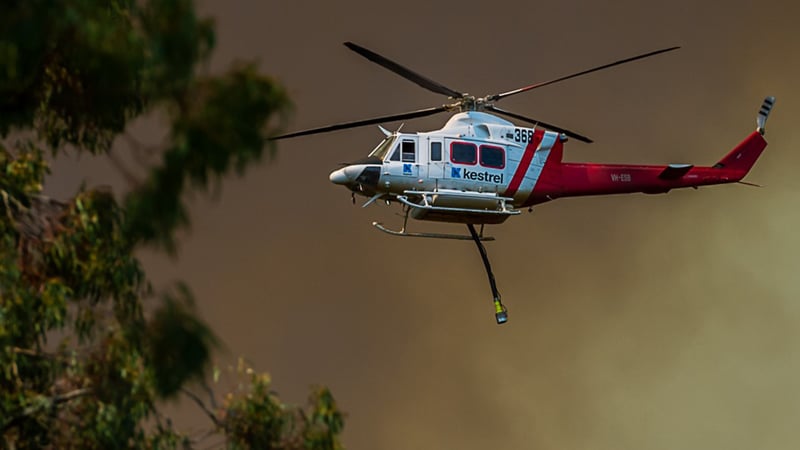
Fire officials did manage to also establish a number of call-when-needed contracts with contracted aircraft.”Although call-when-needed contracts allow a lengthy period of time from the call until the aircraft’s arrival, operators are doing things a bit differently now”. “Typically, most of the operators here in Australia are already pretty well geared up for that, so it only takes an hour or two to get to an incident,” said Cronin. “But you can only have so many aircraft in the same airspace. You’re trying to mix LATs (Large Air Tankers) with SEATs (Single-Engine Air Tankers), with helicopters in smoky conditions.”
And let’s not forget about hobby drones.
“Yeah, we had one drone incident last Saturday, which grounded everybody. It was just after Christmas, which is the peak time for the guys to take them out of the box and put them to use without reading the rules.”
To meet the bushfire challenge, Kestrel Aviation has a sizeable fleet of aircraft available. “We’ve got nineteen aircraft out, six of those are Erickson Aircranes, two Blackhawks, which we’re partnering with Firehawk. Unfortunately, the internal tank didn’t get the STC (Supplemental Type Certificate) before the season started, so we’re using buckets, but the tank should be operational later this year. It’s too bad because it would have given them a chance to showcase their tank. We’ve seen the trials and participated in that, and we were really impressed with the product.”
Los Angeles County Fire Department swears by their Firehawks with tanks. “Oh yeah, we read LA County’s analysis of that and the message that’s coming from them is that the Bell 412s and the Firehawks are great. The 412s are great at hauling cargo, people around and they have wildfire capability. For nighttime they’re fantastic.”
And based on that information, Cronin has enhanced the capability of his own fleet. “We’ve modified our fleet of Conair 85s with new technology and called it the Conair 85 KE, for “Kestrel Electric”, taking the hydraulic drive off the main transmission, and have a hydraulic pump in the tank, which is completely self-contained from the fuselage. We’re uplifting the water in 19 seconds and can deploy it in 0.8 seconds, so it comes out like a rectangular slice of water.”
Needless to say, with the dire situation facing much of Australia, Kestrel’s aircraft had no trouble finding work. “All of our aircraft are on contract through NAFC (National Aerial Firefighting Centre) and its member agencies in New South Wales, Victoria, South Australia and Western Australia. They’re soaking up everything,” he said.
When facing a bushfire season this serious, what about bringing in help from outside? “One problem with them bringing in more aircraft is the regulatory process and the management burden. They’re being offered aircraft from all around the world. We look at that and say ‘that would be fantastic, but we’re in the middle of the battle at the moment and it could be over by the time we could get them certified and integrated.’”
Even with the latest aerial firefighting technology to fight the bushfires, one problem is consistently hampering operations. “The visibility at times is down to 200 meters because of the smoke, so a lot of aircraft are sitting on the ground and that’s what is hindering the attack.”
What about using Night Vision Goggles (NVG)? “It’s working well in areas where it’s being used, but it’s a limited resource that we have at the moment. Victoria is the only state that uses it for firebombing, and we’ve only got two aircraft equipped with it. That doesn’t go a long way.”
Winds are another problem hampering air operations. “Winds are getting squirrely, especially in Alpine areas, so when you have masses of smoke and a headwind that becomes a tailwind, that’s what’s causing problems.”
In addition to the problems caused by smoke and windy conditions, heat is also causing some concerns. “We’re hitting temperatures around 46° C to 47° C, so the actual temperature when you get close to the fire front is probably getting close to the maximum operating temperature for the aircraft, which is about 54° C in the case of the Bell helicopters. We’re getting overheating problems we’ve never seen before, with gearboxes overheating and engines overheating, especially in the Alpine areas.”
The excessive heat, coupled with extremely dry conditions, is making ground firefighting particularly dangerous as well, as Cronin explained. “We provide the bulk of the rappel work for Victoria. We’ve been putting people in, but we’ve had to extract them in some cases very quickly not long after because the air and timber are so dry, and the ambient temperature is so high, that it’s explosive. So dropping crews in is much harder than it would be in a normal season.”
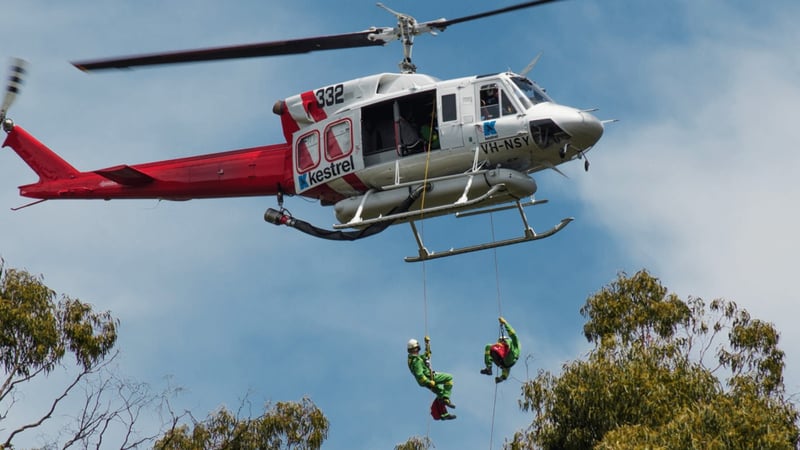
And the meteorological reports they’re getting at the moment indicated that there will be no relief for about four months. “That’s depressing from the point of view that we’ve already had four months of it, maxing people out, maxing out aircraft component replacements, where we’re having component replacement rates that we’ve never seen before,” Cronin lamented. “We normally commence a season with 300 hours clear of any heavy maintenance, and we’ve already surpassed that on most of our aircraft. So we’re into replacing engines, transmissions, and other components, and that’s causing us extra work.”
Fortunately, they have enough spares (for now.) “We do start the fire season with a good spare parts package for the Aircranes, the Blackhawks and the Bells. Still, we’ve had to swap two engines out in the last six weeks, and we swapped out a transmission yesterday. Our replacement programs are accelerated way beyond what they would normally be. Fortunately, we’ve got some very loyal suppliers who are giving us great support.”
But it’s not just the machinery which is wearing out. “We’ve got pilots and engineers who are maxing out and we’ve got no relief from it,” Cronin worried. “We respect our flight and duty times, as we have to, but the engineers are probably the hardest working because they don’t have any formal limits like the pilots. We watch them as closely as we can, and we’ve had offers from people around the world to help, but the induction requirements and getting to know where the equipment is takes time. Finding people who have had training in Australia makes it a lot easier. We’ve got some great Canadians here helping us out, which is fantastic, some New Zealanders, and others. But the way the requirements are for the agencies and for the regulator if you don’t have your crews in place by the start of the season, it’s very difficult to bring people in mid-battle. That’s understandable and something we need to look at in the future to be able to deal with surges in capability.”
Cronin has a simple way of summing up the situation as it stands.
“This is war. We’ve never had a battle like this, that’s going to cost the country so much."
"The government was crowing about their $5 billion surplus a couple of months ago, but this is going to account for that.” And maybe a few billion more.
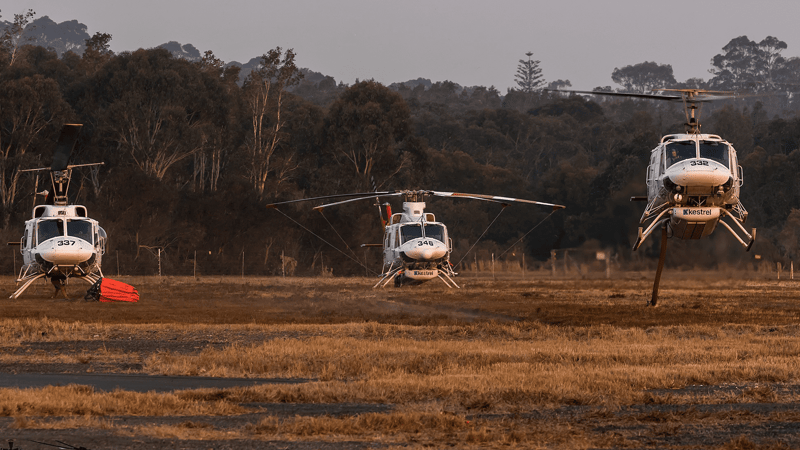
“This is going to create massive rebuild programs. The Councils are going to have to think about the building codes because a lot of these beautiful little towns that have been burned out in the last couple of days had quaint old buildings that were built a century or more ago, but that’s why they’re going up in smoke. All that ambience makes them popular spots for tourism.” Now, they may have to be built up to the latest Bushfire Attack Level ratings, which could take away the quaint appearance. Not many tourists want to visit towns populated by concrete bunkers.
“On the positive side, the loss of life has been significantly lower than previous big bushfire events, which we’re putting down to better intelligence, people taking notice of what’s going on, and getting away from the path of the fire. There are probably some people who remained who are regretting that they didn’t heed the advice of the fire commissioners,” Cronin. “The loss of life this season has been tragic, and nothing can remove the pain that it inflicts on families and communities; all we can do is try to mitigate risks where possible in a dynamic environment that presents constant challenges.”
“This is the new world we’re living in, so we’ve got to change our practices, look at what we’re doing, and when this is all over we need to ask ‘Have we got the right equipment?"
"Have we got the right volume of equipment? What’s the perfect mix? What should we do about fuel reduction burns?’ We might have a couple of safe years now, but we can’t forget that this can happen. Eucalyptus regrowth is very fast. In five years’ time, these areas will probably be as vulnerable as they are now.”
Besides fire agencies preparing for the next bushfires, homeowners can do their part as well. “We have bushfire action plans and every home is encouraged to have their plan, to clean up the grass and brush in the spring,” said Cronin. “We’re so much better prepared than in the past and people are starting to work with that, which is good.” And which probably explains the relatively low loss of life considering the severity of the bushfire emergency.
“I think people are also aware that, even though they have a plan, conditions are so unpredictable and extreme, and chances are high that they forget the plan and just get out. There’s a lot of smart people who died on Black Saturday (in 2009). It wasn’t just the ill-informed ones who stayed behind to defend their property. There were a lot of warnings then as well, but a lot of people chose to stay behind because they had not witnessed the ferocity of bushfires on days of low humidity and gale-force winds. With the benefit of hindsight, residents are making decisions early and finding safe havens on extreme days of fire risk.”
Now the fires are making their own weather. “We had two bushfires in Gippsland in the eastern part of the state where the smoke columns went up about 14 km, and then the two tops joined, creating almost nighttime conditions, which made the aviation option less effective and less usable. With those conditions over the past three days, and probably for the next three, it’s going to take a while before we know the scale of the damage."
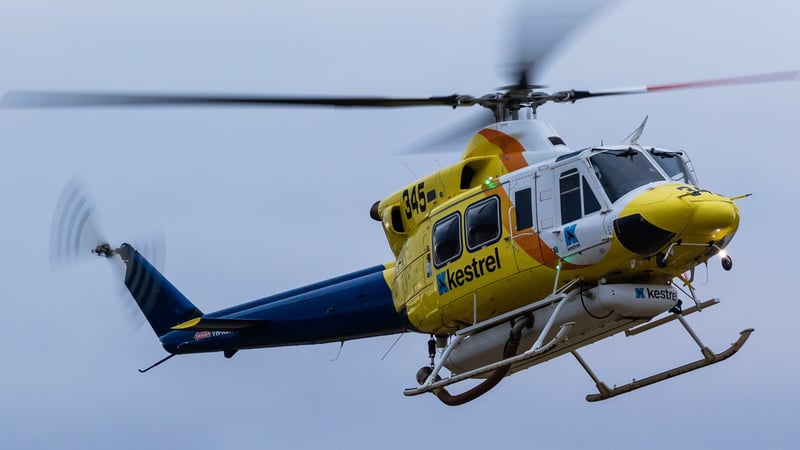
But just as Australians rose to the challenge in World War II, Cronin says that they’re resilient. “We are in for the long haul. If we don’t see relief from this in the next four weeks, we’re going to have problems. I don’t think anyone has ever had to deal with this volume of flying over protracted periods. Normally you get a flare-up for a week or so and then you’re out of it. We’ve been at this for nearly four months already and we’ve got some of the worst situations in front of us right now, and we’ve got four more months to go. We’re in the middle of the soup right now. We’ll hope that not too many people get harmed and we’ll do the best we can to see to that.”
However the picture looks in another four months, Kestrel Aviation will still be fighting the good fight to protect homes and lives from bushfires.
Aerotech, founded in 1968, operates a 30-strong fleet primarily of Air Tractor AT-802s for bushfire suppression and agricultural applications.
Bob Roper, has had a career unlike any but a precious few will ever experience. Learn more about him in this blog & his fire service’s response...
The Yarnell Hill Fire, ignited by lightning on June 28, 2013, killed 19 Granite Mountain Hotshots. It was Arizona’s most lethal wildfire.
Be the first to know about industry insights, product updates and more.